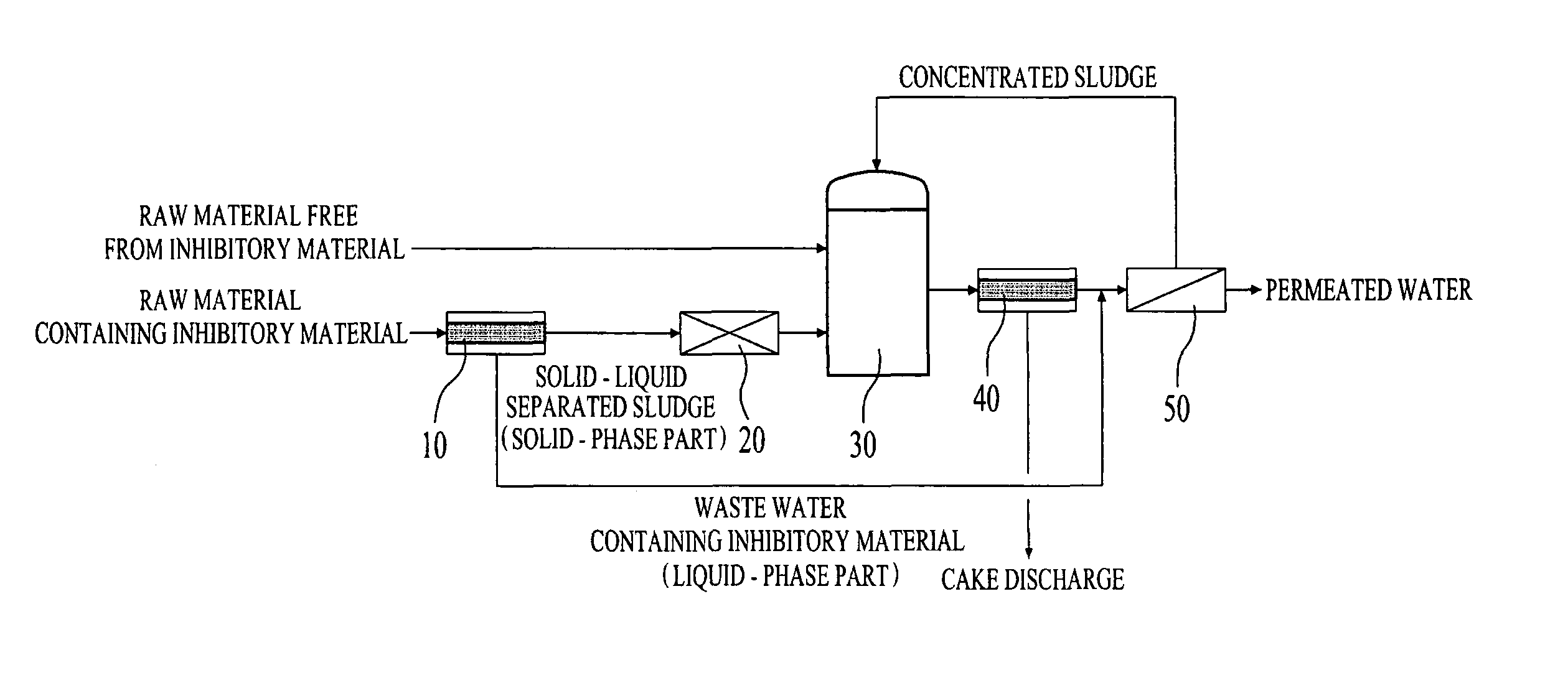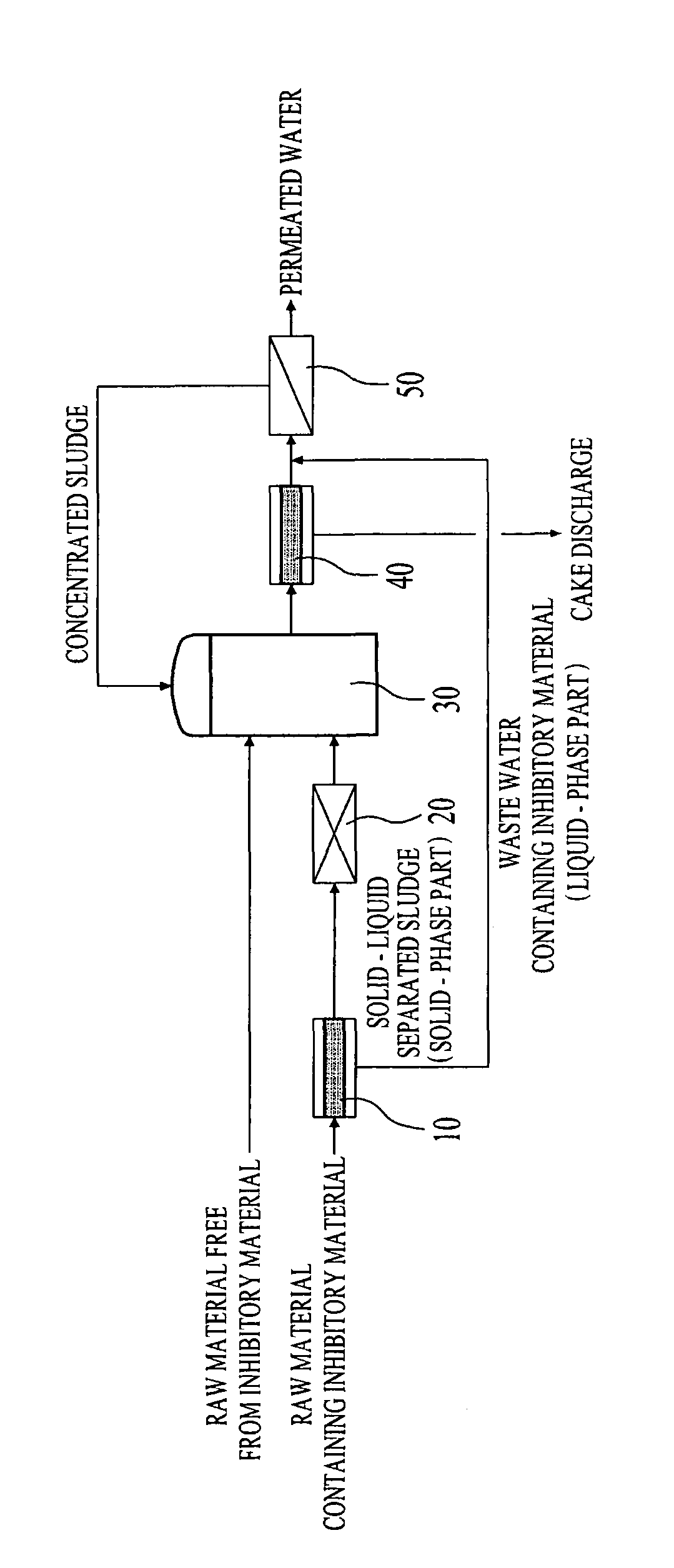Method and apparatus for producing bio-gas employing technology for improving quality of raw material fed thereto
a technology of raw material feed and production method, applied in the direction of filtration separation, multi-stage water/sewage treatment, separation process, etc., can solve the problems of increasing the capacity of the digestion reactor and/or equipment cost, reducing the productivity of bio-gas, etc., to achieve the effect of effective and efficient production of bio-gas
- Summary
- Abstract
- Description
- Claims
- Application Information
AI Technical Summary
Benefits of technology
Problems solved by technology
Method used
Image
Examples
Embodiment Construction
[0016]Hereinafter, the present invention will be described in more detail, in conjunction with the accompanying drawing.
[0017]FIG. 1 schematically illustrates a structure of an apparatus for production of bio-gas according to the present invention. The apparatus for production of bio-gas according to the present invention has a configuration in that a first solid-liquid separator 10, a hydrolysis reactor 20, an anaerobic digestion reactor 30, a second solid-liquid separator 40 and a sludge concentrator 50 are sequentially arranged.
[0018]First, a raw material, for producing bio-gas is classified into one free from inhibitory materials and the other containing the inhibitory materials, wherein the former without the inhibitory material is directly introduced into the anaerobic digestion reactor 30 while the latter containing the inhibitory materials is fed to the same anaerobic digestion reactor 30 through the first solid-liquid separator 10 and the hydrolysis reactor 20.
[0019]The fir...
PUM
| Property | Measurement | Unit |
|---|---|---|
| temperature | aaaaa | aaaaa |
| pressure | aaaaa | aaaaa |
| concentration | aaaaa | aaaaa |
Abstract
Description
Claims
Application Information
 Login to View More
Login to View More - R&D
- Intellectual Property
- Life Sciences
- Materials
- Tech Scout
- Unparalleled Data Quality
- Higher Quality Content
- 60% Fewer Hallucinations
Browse by: Latest US Patents, China's latest patents, Technical Efficacy Thesaurus, Application Domain, Technology Topic, Popular Technical Reports.
© 2025 PatSnap. All rights reserved.Legal|Privacy policy|Modern Slavery Act Transparency Statement|Sitemap|About US| Contact US: help@patsnap.com


